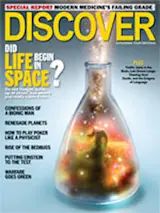Las Vegas, Nevada—As I flew at night into the Las Vegas McCarran International Airport, the Strip casinos rose like man-made mountains from a desert of low, dark buildings. The lights called to me, and once I reached them, I ducked into a blackjack area and watched desperate people try to beat the house—which, of course, they never would (see “Big Game Theory,” page 58). I sidled up to a table, but before even one card got tossed my way I realized that the blaring music—na na na na, hey hey-ey, good-bye—was telling me what the casino wanted me to say to my money. That moment also reminded me of my real reason for coming to Vegas. I was here not for the man-made mountains but for the much more spectacular real ones just outside of town.
I escaped the casino, rested up in an inexpensive hotel, and the next morning ...














